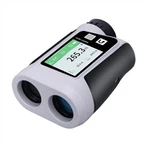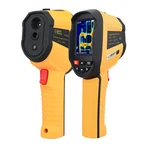Handy Tips for Using a Multimeter
1. Use a multimeter to determine the positive and negative poles of the speaker
Firstly, set the pointer multimeter to the DC 0-5mA range, and then connect the two probes to the two solder pads of the tested speaker. Gently press the paper tray of the speaker with your hand and observe the direction of the multimeter pointer's swing. If the pointer deflects in the positive direction, the red probe is connected to the negative terminal of the speaker, and the black probe is connected to the positive terminal of the speaker. On the contrary, the red probe is connected to the positive pole, and the black probe is connected to the negative pole.
Using a multimeter to judge the quality of piezoelectric ceramics
Piezoelectric ceramics are a type of artificially synthesized piezoelectric material. When subjected to external pressure, charges are generated on both sides, and the amount of charge is proportional to the pressure. This phenomenon is called the piezoelectric effect. Piezoelectric ceramics have piezoelectric effect, which means that they will deform under the action of an external electric field, so piezoelectric ceramic pieces can be used as sound emitting elements.
By utilizing the piezoelectric effect of piezoelectric ceramic plates, a multimeter can be used to determine their quality.
Lead two wires out of the two poles of the piezoelectric ceramic piece, then place the ceramic piece flat on the table, connect the two leads to the two probes of the multimeter, turn the multimeter to the * low current mode, and then gently press the ceramic piece with a pencil eraser. If the multimeter pointer swings significantly, it means the ceramic piece is intact; otherwise, it means it is damaged.
The capacitance function of a multimeter
When electricians use digital multimeters, the basic function of capacitors in the circuit is to charge and discharge. However, many circuit phenomena derived from this basic charging and discharging function make capacitors have various uses, such as in electric motors, where electricians use them to generate phase shifts; In photographic flash, it is used to generate high-energy instantaneous discharges, etc; In electronic circuits, capacitors have various uses with different properties, and although they have distinct differences, their functions all come from charging and discharging.






